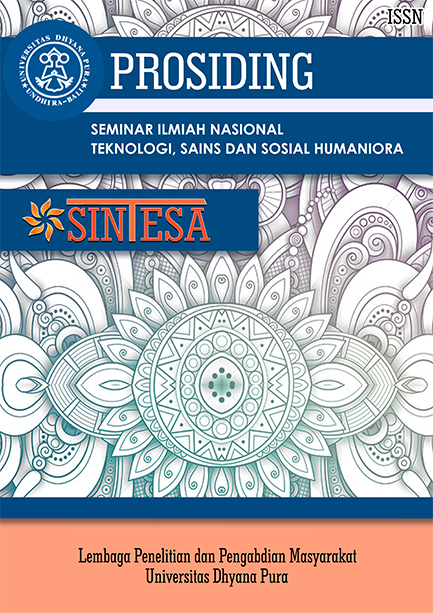ANALISIS PERAN PEMERINTAH DAERAH TERKAIT OPTIMALISASI PELAKSANAAN PROGRAM JAMINAN KESEHATAN NASIONAL BAGI MASYARAKAT MISKIN DI KABUPATEN KARANGASEM
Main Article Content
Abstract
ABSTRAK
Cakupan Kepesertaan JKN-KIS per 12 Januari 2018 untuk Kabupaten Karangasem sebesar 55,68% dan 44,43% penduduk yang belum memiliki jaminan kesehatan, ini merupakan jumlah kepesertaan terendah se-Kabupaten di Bali. Kemudian per 1 Desember 2018 sebesar 78,95% yang sudah memiliki jaminan kesehatan dan 21,05% penduduk belum memiliki Jaminan Kesehatan, walau ada peningkatan jumlah kepesertaan namun masih menjadi peringkat tiga terbawah dengan jumlah kepesertaan JKN se-Kabupaten di Bali. Penelitian ini bertujuan untuk mengetahui Peran Pemerintah Daerah terkait Optimalisasi pelaksanaan Program Jaminan Kesehatan Nasional bagi Masyarakat Miskin di Kabupaten Karangasem.
Penelitian menggunakan metode penelitian kualitatif. Pemilihan informan dilakukan dengan cara purposive sampling yaitu empat Informan dipilih karena paling banyak mengetahui atau terlibat langsung dalam tujuan penelitian. Istrumen penelitian yaitu dengan pedoman wawancara. Analisis Data menggunakan analisis tematik.
Hasil Penelitian: Anggran yang disediakan Pemerintah Kabupaten Karangasem untuk menunjang program Jaminan Kesehatan Nasional pada Tahun 2019 mengalokasikan anggaran sebesar Rp.9.763.776.000 dan KBS mengalokasikan anggaran sebesar 26.452.321.138,80. Terkait Mendorong Kepesertaan, pada tanggal 12 Pebruari 2019 Pemerintah Kabupaten Karangasem mendeklarasikan Universal Health Coverage (UHC) dengan jumlah peserta 97,61% dan 2,39% masyarakat belum memiliki Jaminan Kesehatan. Terkait ketersediaan sarana dan prasarana pelayanan kesehatan dan SDM Kesehatan sudah optimal namun dari sisi jumlah tenaga Kesehata masih minim seperti Apoteker, Asisten Apoteker dan Dokter.
Peran Pemerintah Kabupaten Karangasem untuk menunjang program Jaminan Kesehatan Nasional dari sisi anggaran, mendorong kepesertaan dan ketersediaan sarana dan prasarana pelayanan kesehatan dan SDM kesehatan sudah sangat optimal, namun untuk jumlah kuota yang disediakan diharapkan terpenuhi dengan melakukan perbaikan data dan update data terbaru.
Kata Kunci: Pemerintah Daerah, Masyarakat Miskin, JKN.
ABSTRACT
The coverage of JKN-KIS Participation as of January 12, 2018 for Karangasem Regency is 55.68% and 44.43% of the population does not have health insurance, this is the lowest number of membership in all Regencies in Bali. Then as of December 1, 2018 there were 78.95% who already had health insurance and 21.05% of the population did not have Health Insurance, even though there was an increase in the number of participants but still the third lowest rank with the total JKN membership in the Regency. This study aims to determine the role of local governments in optimizing the implementation of the National Health Insurance Program for the Poor in Karangasem Regency.
Research uses qualitative research methods. The selection of informants was done by purposive sampling, namely four informants were chosen because they knew the most or were directly involved in the research objectives. Research instruments are by interview guidelines. Data analysis uses thematic analysis.
Research Results: Anggran provided by the Karangasem Regency Government to support the National Health Insurance program in 2019 allocated a budget of Rp9,763,776,000 and KBS
allocated a budget of 26,452,321,138.80. Regarding Encouraging Participation, on 12 February 2019 the Karangasem Regency Government declared Universal Health Coverage (UHC) with 97.61% of participants and 2.39% of the people not yet having a Health Insurance. Regarding the availability of facilities and infrastructure for health services and health human resources, they are optimal, but in terms of the number of health workers, they are still minimal, such as pharmacists, assistant pharmacists and doctors.
The role of the Karangasem Regency Government to support the National Health Insurance program from the side of the budget, encourages participation and the availability of facilities and infrastructure for health services and health human resources is very optimal, but for the quota amount provided is expected to be fulfilled by improving the latest data and data updates.
Keywords: Local Government, Poor People, JKN.
Article Details
![]()
This work is licensed under a Creative Commons Attribution-NonCommercial-ShareAlike 4.0 International License.
